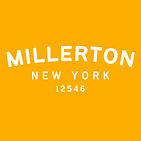A Stroll Through Millerton’s History
- millertonbusinessa
- Oct 27
- 2 min read

Millerton may be small — less than a square mile — but this little village has a big story to tell. From railroads and ironworks to art galleries and bookshops, Millerton has reinvented itself time and again. And today, that spirit of creativity and resilience is still alive and well.
Born of the Railroad
Back in 1851, civil engineer Sidney Miller extended the railroad north, linking Boston to the Hudson River. Practically overnight, a new village sprang up around the tracks — and to honor Miller, they named it Millerton.
The railroad transformed the town into a bustling agricultural and commercial hub. Farmers could suddenly send their crops and milk far beyond Dutchess County, while merchants found new customers arriving by train. Hotels soon followed: the Millerton Hotel opened in 1852, George Greathead’s Central Hotel in 1865, and the Brick Block Hotel in 1872.
By the time Millerton officially became a village in 1875, it was already known as a lively stop on the map.
The Irondale Boom
Just down the road, the Millerton Iron Company put the area on the industrial map. Founded in 1854, the Irondale foundry produced up to 12,000 tons of car-wheel pig iron a year by the 1880s. At its height, it employed about 150 people and had its own general store, grist mill, post office, and cemetery (you can still visit the historic marker today).
Irondale’s iron fueled the nation’s growth — and gave Millerton its first taste of industry.
Peaks and Valleys
By the late 1800s, Millerton was thriving, with three railroads converging in the village and three hotels welcoming travelers. But like many small towns, fortunes shifted in the 20th century. Farms closed, the milk plant shut down, and the village quieted.
Yet Millerton has always had grit. Over the years, artists, makers, and entrepreneurs have reimagined Main Street, bringing fresh energy to old buildings.
A Village with New Life
Today, Millerton buzzes with creativity. Independent shops, galleries, and cafés fill downtown. Local favorites like Oblong Books, the Oakhurst Diner, Harney Tea Café, and the Music Cellar give the village its one-of-a-kind character.
On Saturdays, the North East Community Center Farmer’s Market is the place to be, with fresh produce, local treats, and neighbors catching up. The NorthEast-Millerton Library hosts art shows, concerts, and community programs, while the weekly Millerton News keeps everyone in the loop.
Millerton may look different than it did in the 1800s, but that same spirit of connection and resilience still runs through its streets.
Why Visit Millerton?
Because here, history isn’t just in the past — it’s woven into everyday life. Whether you’re wandering the historic walking tour, browsing in Oblong Books, or sipping tea on Main Street, you’re part of the next chapter in Millerton’s story.

_edited.jpg)



Comments